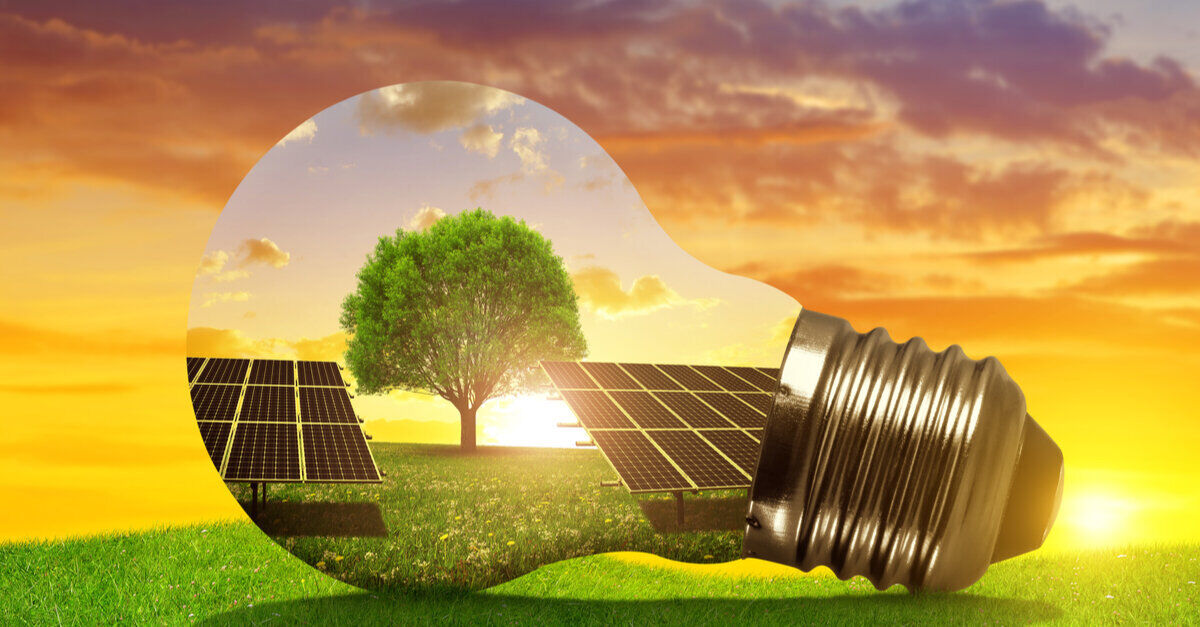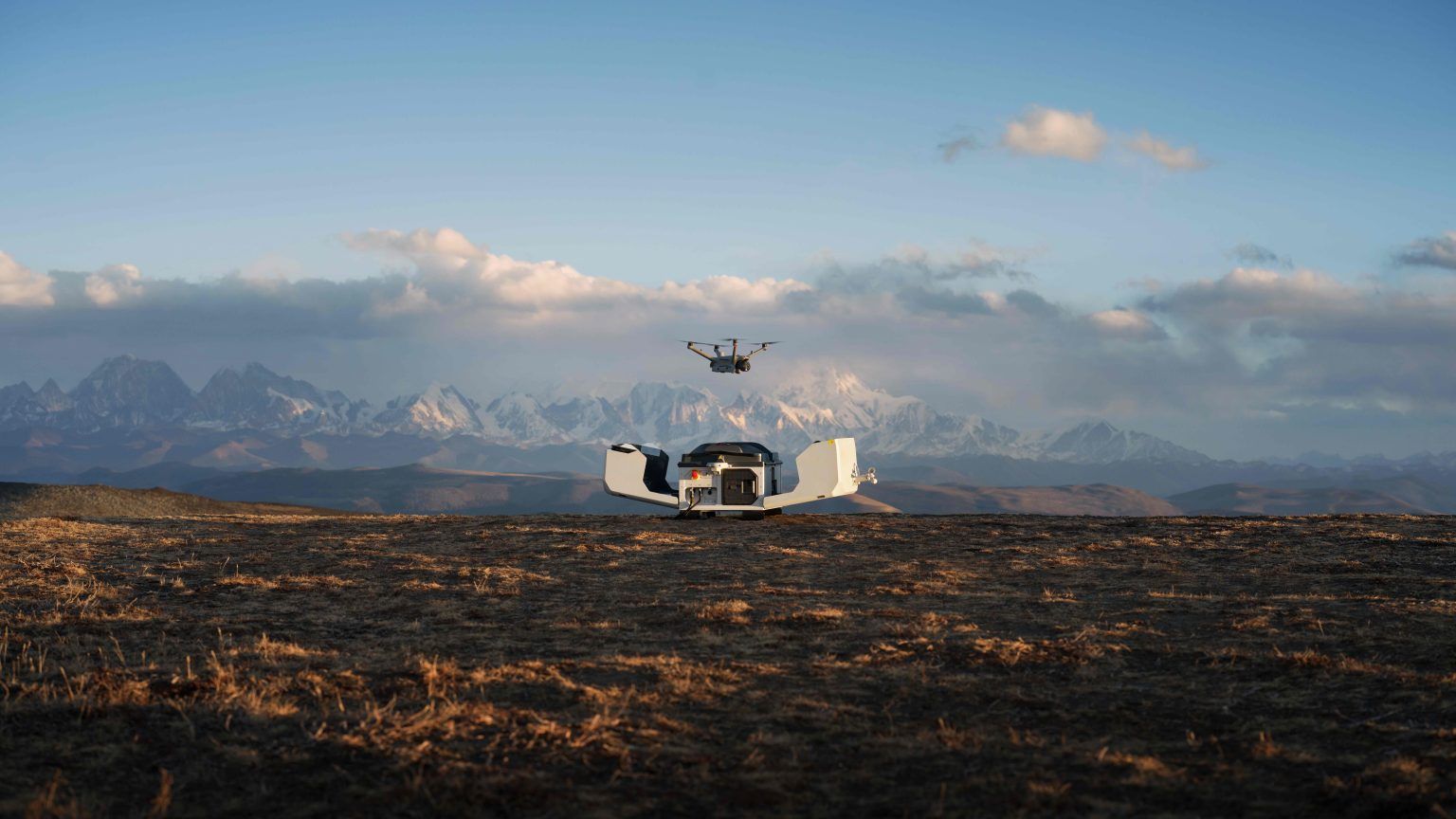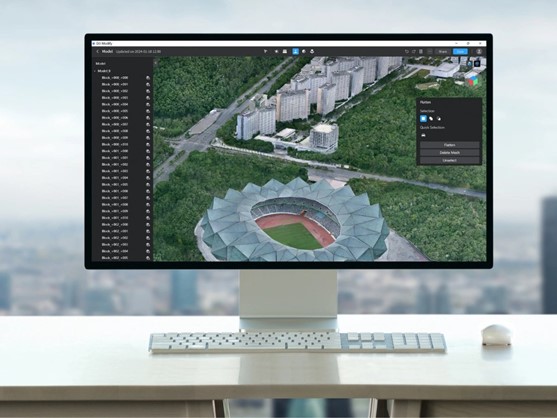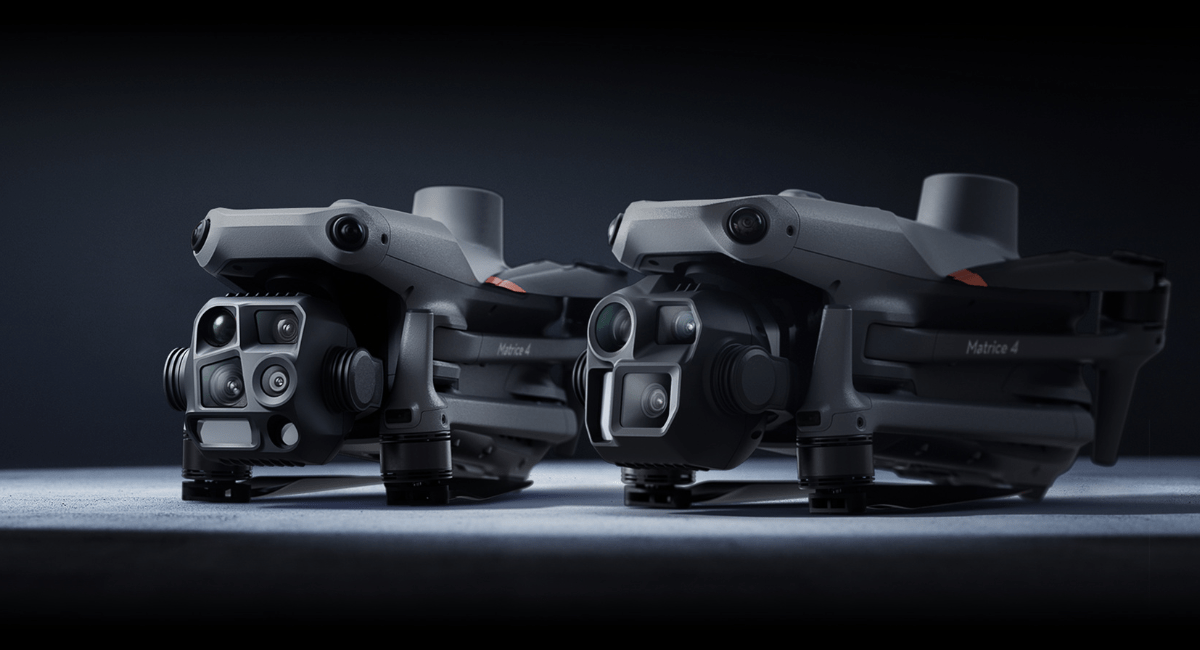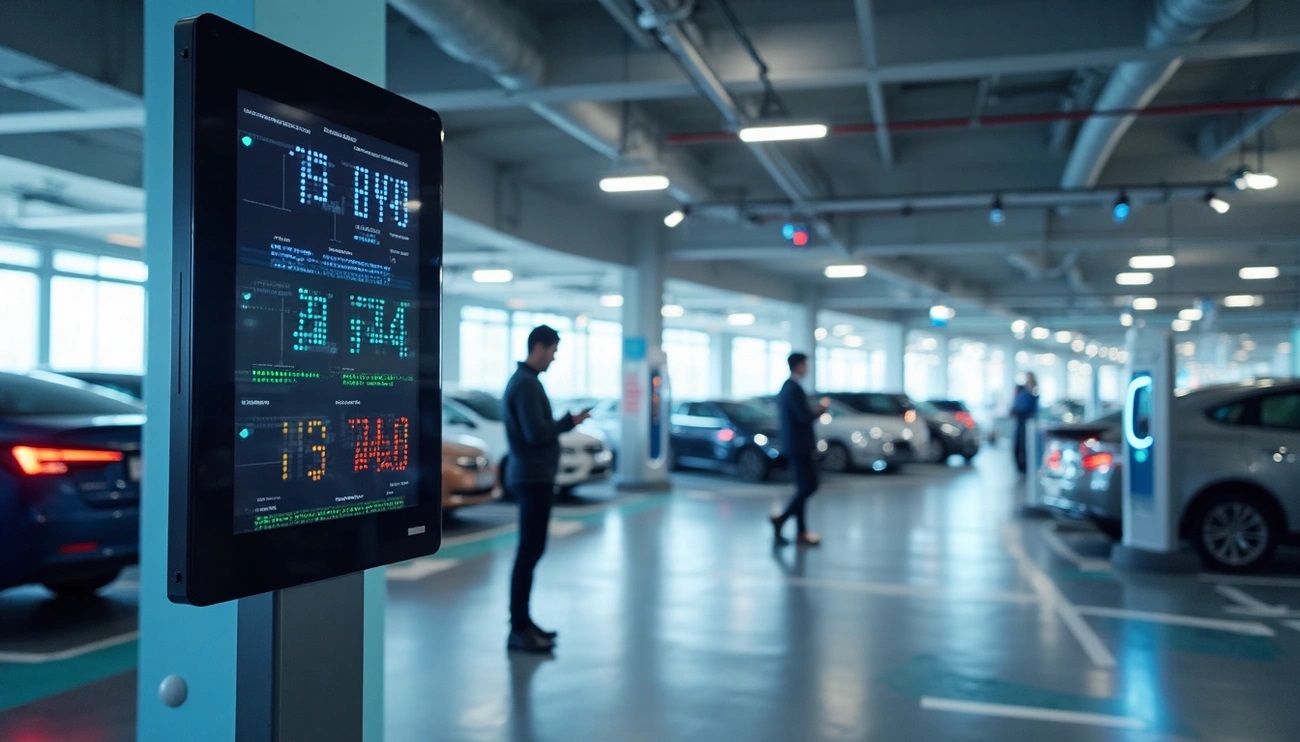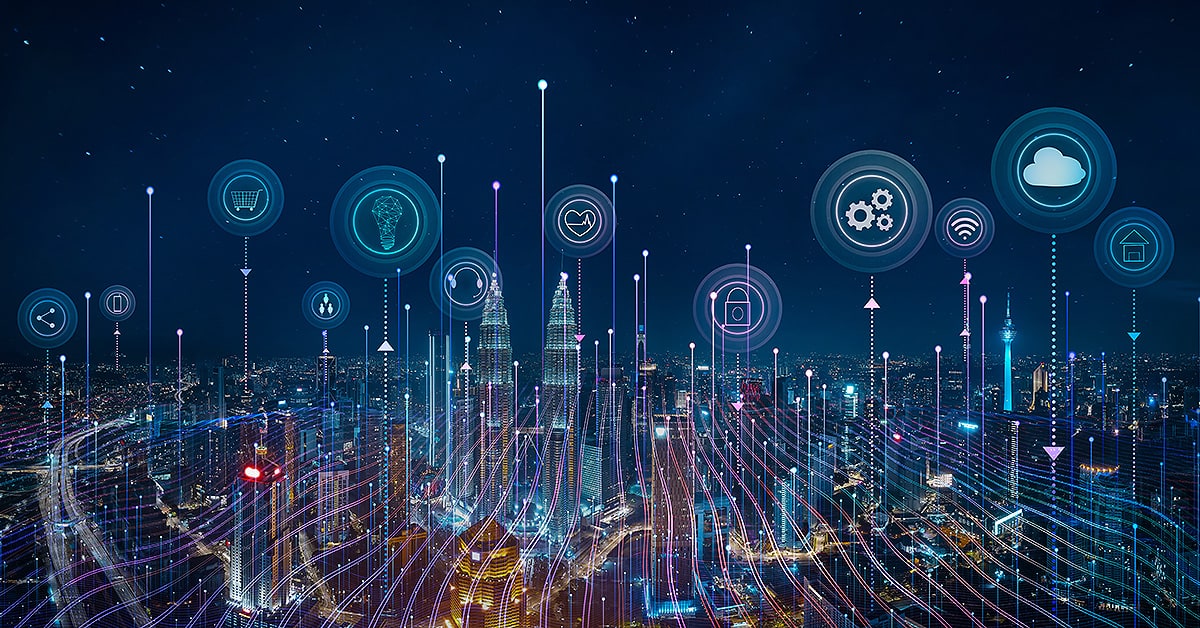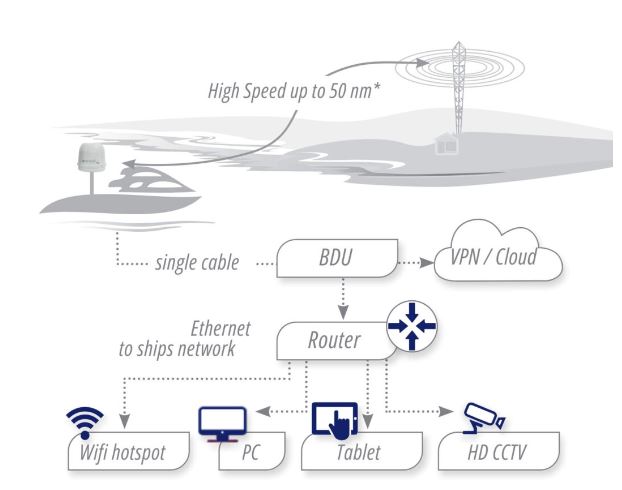Since the industrial revolution, the world has tended to use traditional energy sources such as fossil fuels, petroleum and natural gas. However, the increasing consumption of these resources, along with the lack of their natural production created the need to move towards other non-traditional renewable alternatives to obtain the quantities of energy required, taking into consideration that these sources should be a better alternative financially and environmentally. Luckily, solar energy has proven its effectiveness in providing energy directly and securely. Therefore, it has become the focus of attention for the development of clean and renewable energy.
There are many solar energy solutions that use sunlight and heat to obtain heat, hot water and electricity. It is also used in various domestic, industrial and agricultural purposes. Among these technologies are photovoltaic System.
The sun’s rays are converted directly into electrical energy through what is called solar cells, which are “photovoltaic” converters that convert direct sunlight into electricity. Solar cells are semi-conductive photosensitive cells surrounded by a front and back cover that conducts electricity.
Solar cells are thin chips of silicon with small amounts of impurities that gives one side a positive charge and the other a negative charge. The output power of a solar cell is usually one watt.
Solar cell panels can be used in homes to convert energy derived from the sun into electrical energy to meet daily needs, such as water heaters and air conditioners, as well as operating some cooking, heating and cooling appliances. Integrated systems that rely on solar energy are now being built to generate electricity, and they consist of two options:
- Individual system, or off-grid system.
- Dual system, or on-grid system.
Solar energy systems consist of panels, inverters or batteries, connectors, and a charge regulator. The choice between the two systems, whether it is separated from the network or connected to the network, is not randomly chosen. Rather, it is necessary to look at criteria on the basis of which the choice is made between the two systems. For example, in remote places far from government electricity networks, the off-grid is indispensable for generating the necessary electric power.
Off-grid system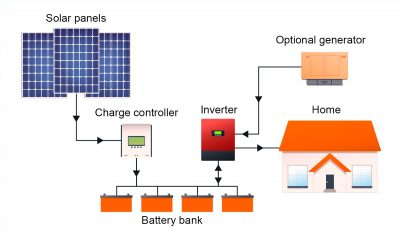
Off-grid solar power system, also known as an independent solar power plant, as shown in the figure, works without connection to the public electricity grid, and this system requires batteries to store the excess electric energy for use at night, it is ideal for AC/DC electric power generation in residential areas, construction sites, high-rise buildings, mining stations, temporary facilities and other areas that are completely far from the public electricity grid. This system can also work in a house where the land line is also available, and with a simple electrical circuit it can operate automatically in the event of a power outage, while the rest of the time the house derives its electricity from the public electricity network.
These off-grid solar systems are characterized by self-control, automatic protection, remote monitoring, integrated structure, stable and reliable performance, and environmentally friendly. With easy and simple use, this off-grid system is suitable for home and office lighting and charging of smartphones and other digital devices when camping.
On-grid system
The on-grid solar power system is the stations connected to the government electricity grid to generate electric power. It helps to enhance the flexibility of using solar energy and extend the service life of solar electricity generation, as electricity can be sent based on the needs of end users or power grid operators. In the event of a public power grid failure, it can provide emergency electrical power, which makes it ideal for installation in residential areas.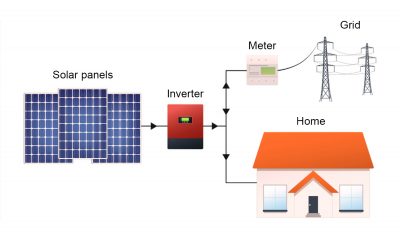
In this system, the electricity meter is bidirectional; That is, it flows in both directions, either the electricity is going to the house or it is going out from the house to the public electricity network, in other words, the consumer sells the electricity in excess of his needs, which he obtained from solar energy, to the Electricity Authority.
However, the country’s policy must support this type of electricity meter in order for it to be installed. However, Arab countries are starting to adopt this system. One of the advantages of this system is that it does not need batteries or a charging regulator, and it also prevents energy waste.
Solar pumping systems
Solar pumping systems are a clean and simple alternative to a diesel-powered pump set. These systems are often used for agricultural operations in areas far from the electricity grid, where water is pumped directly for agricultural use or kept in a tank to be used later for drinking or irrigation, and it works in the daylight only.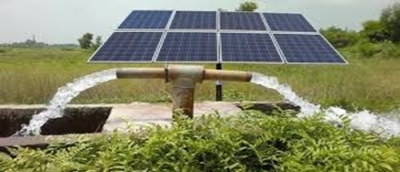
The solar water pumping system consists of the solar pump inverter, the submersible pump and the solar cell array. Because it is fully automatic and does not require supervision, and uses a water tank instead of a storage battery to pump water directly, this system helps to greatly reduce installation and maintenance costs on the basis of stable operation.
The use of solar pumps will be able to solve the problems of drinking water, irrigation and other water-related difficulties in poor areas, agricultural areas, animal husbandry farms and other remote places.

